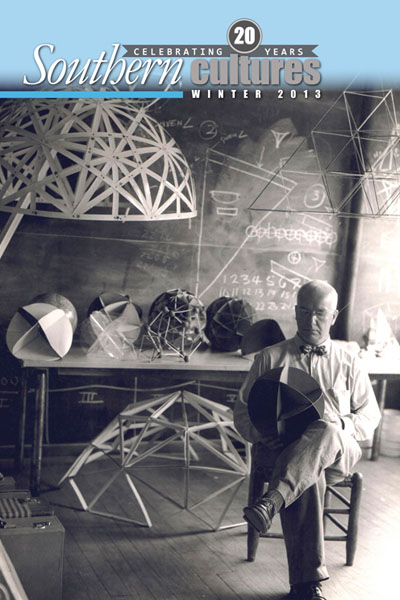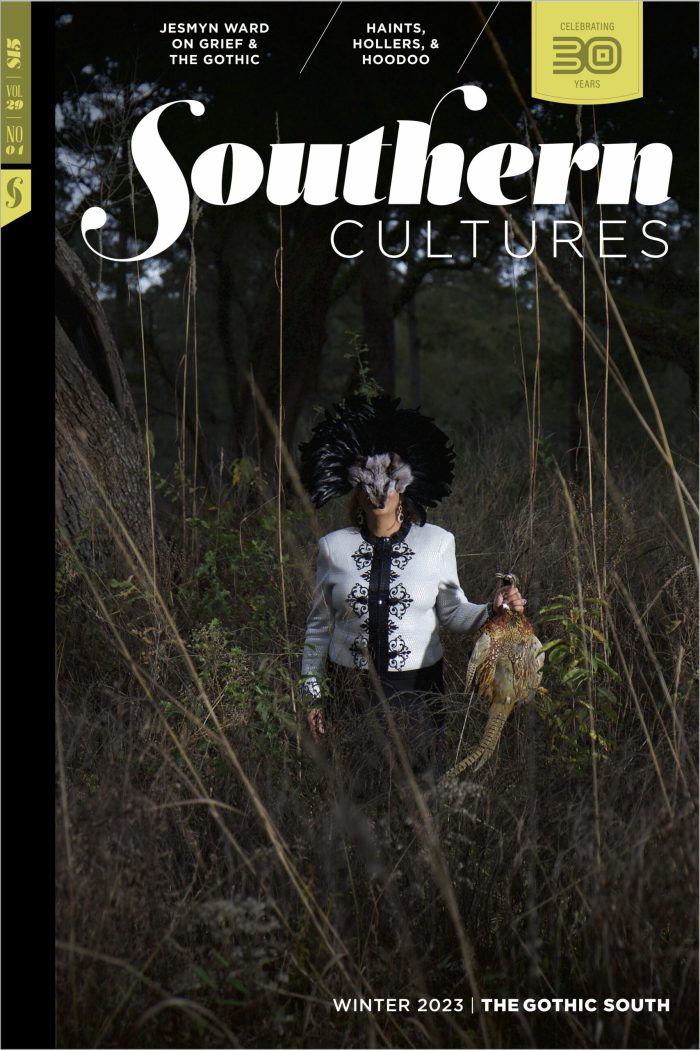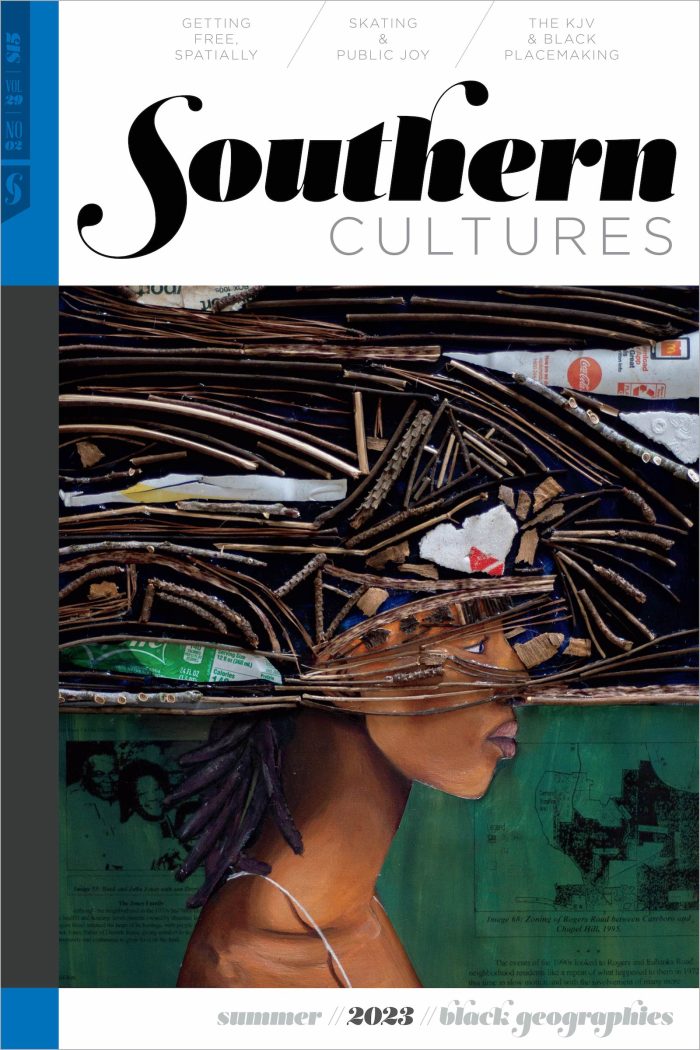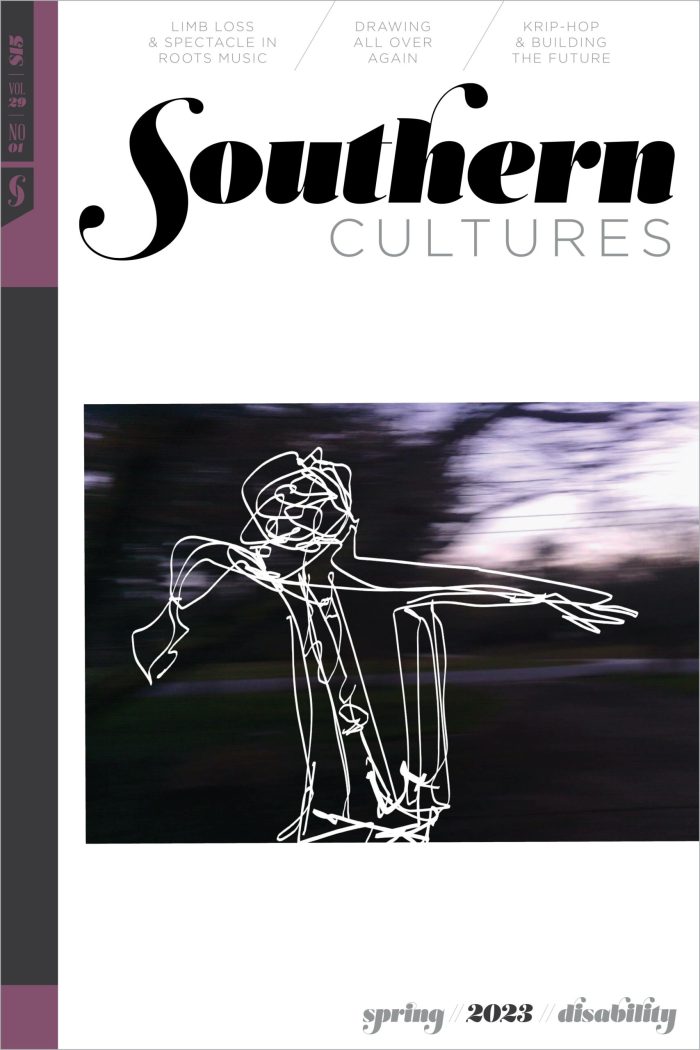BUY ACCESS
by Jocelyn R. Neal
“Our definitive experiences come not from the identity of a monolithic region but, rather, from the details overlooked in our too-frequent generalizations about the capital-S South.” In late July, I pulled on well-worn leather gloves and dove into the looming task of weeding my mother’s beloved roses. My mother sat on the front porch, too »
BUY ACCESS
by John W. Coffey
“‘On a shelf behind the speaker’s desk, was a marble bust, on the base of which in relief were the words “John C. Calhoun.” Poised on its crown, was an inverted inkstand, whose contents had descended in copious streams over the face . . . Under the name, in pencil, was written this explanatory clause. »
BUY ACCESS
by Carolyn Osborn
“Crossing the Mississippi River, putting my head out of the window to stare at its broad muddy width—the last boundary of my well-known southern world—I left Tennessee.” In 1946, a year after World War II was over and just before school started, my ten-year-old brother and I (twelve then), and my father and his new »
BUY ACCESS
by James G. Thomas Jr.
“‘Son, I don’t care if you have to sell peanuts on the street, you work for yourself. Don’t make another man rich.'” As anyone who has studied the history of the South knows, racial hostility was ubiquitous across the Mississippi Delta throughout the hundred years following the Civil War. But contrary to the dominant narrative, »
BUY ACCESS
by Patricia Silver
“‘And where do I fit here? For the Floridian, all Hispanics, all who speak Spanish, are a mix of black and white and of no use . . . It’s a very, very delicate position.'” The Latinization of the U.S. South has inspired a body of literature examining economic, political, social, and cultural changes in »
Art
by Charles Perrow
Excerpts from Perrow’s essay in Southern Cultures, Vol. 19, No. 4: Winter 2013, appear below. Access the full essay via Project Muse or purchase the issue in our store. Black Mountain College, near Asheville, North Carolina, was an icon of progressive education during its short life, from 1933 to 1956. When I was there, from 1946 »
BUY ACCESS
by Pepper Capps Hill
“That archaic system of child labor that often sent me home bleeding at thirteen or saw me faint from heat exhaustion at sixteen seems terribly oppressive and immoral to one who never lived it. Ask tobacco kids how they remember it, and they will paint a radically different picture.” I keep a real tobacco leaf »
BUY ACCESS
by Philip C. Kolin
“for smooth-talking Negro boys from Chicago more equal than separate . . .” They said I had picturesin my wallet, white girlsGisele MacKenzie, Joan Collins.It was immoral for a black boyto tote these Hit Parade darlingsin his hip pocket, going jukingwith their sweet white voices.
BUY ACCESS
by Grace Elizabeth Hale
University of Georgia Press, 2011 The best thing about Allen Tullos’s new book Alabama Getaway is the voice. At the end of the book, in a beautifully written passage called “Hospitality’s Nutshell,” Tullos visits the gift shop of a pecan processing plant. There, he speaks with a saleswoman “who could have been one of my »
by Tanfer Emin Tunc
University of North Carolina Press, 2010 In her recent work Cooking in Other Women’s Kitchens: Domestic Workers in the South, 1865-1960, Rebecca Sharpless provides an intriguing account of the personal and public lives of African American domestic workers from Reconstruction to the beginning of the Civil Rights Movement. She traces how cooking and the other »
BUY ACCESS
by Drew A. Swanson
University of North Carolina Press, 2010 The Chief Vann House is one of Georgia’s more popular State Historic Sites, drawing thousands of guests to a restored house and estate that interprets antebellum Cherokee and plantation culture. Tiya Miles’s new book, The House on Diamond Hill, delves into the Chief Vann House’s formative years, bringing to »
BUY ACCESS
by Melody Maxwell
University of Missouri Press, 2010 In 1987, American feminist Charlotte Bunch penned the now-famous phrase, “You can’t just add women and stir.” Instead of simply tacking on a few paragraphs about women to male-dominated historical accounts, Bunch argued that scholars must reshape their understanding of history, giving women’s actions and views equal weight to those »





